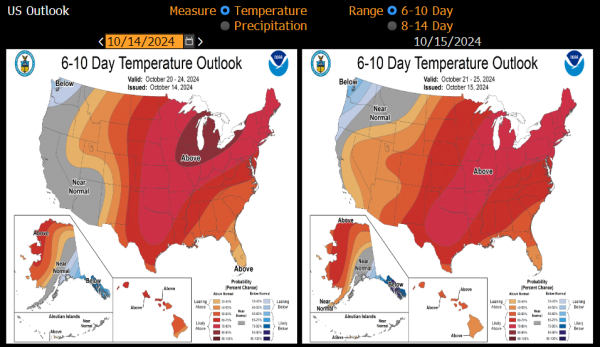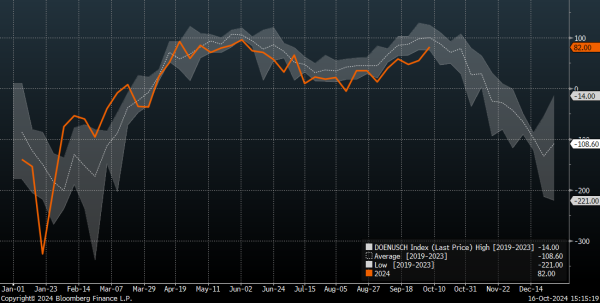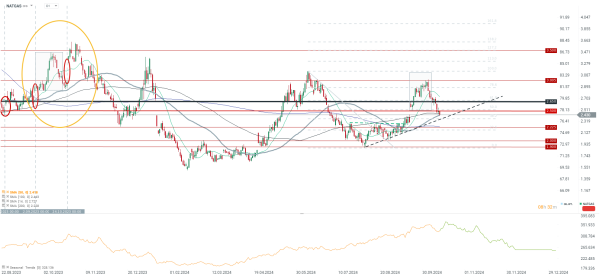⏬NATGAS drops 2.5%
High temperatures in the US are reminiscent of last year's warm autumn and winter, which reduced gas consumption during the heating season
Natural gas continues its strong declines (-2.5% today). Yesterday, the rebound attempt failed, although still today we see tests of the 50- and 100-period averages near the $2.45 level. Slightly below there is support in the form of the Fibo retracement of 38.2 and the upward trend line at the level of $2.37/MMBTU. It is worth noting that before the last 3 rollovers there was downward pressure on the price. The current rollover from the November contract to the December contract will be the penultimate upward rollover. From the January contract to the summer contracts we will see backwardation.
There still seems to be a chance of a similar move to last year, when there was a sharp rise of 10% after the contract rollover. However, the declines began in early November, which is when the first inventory decline is due. This one, however, may come later than seasonality would suggest, looking at the weather outlook.

With the cooling season behind us, higher temperatures indicate that gas demand due to heating demand may be low in the near term. A longer 2-week outlook also shows continued high temperatures. Source: Bloomberg Finance LP
For the past few weeks, we have seen a smaller increase in stocks than seasonality would suggest. Now, however, the gain has returned to the 5-year range, and there is a chance that inventory gains could approach the 100 bcf level in the next 2-3 weeks. In view of this, it is highly likely that with the actual start of the heating season, larger price declines will also begin.

Inventories grew less than expected for most of the vacations. Now, however, the situation is returning to normal, which could put downward pressure on gas in the coming weeks. Source: Bloomberg Finance LP
After tomorrow's session, there will be a swap from the November futures contract to the December contract. The December contract is trading about $0.4 higher. In view of this, there is a chance of an opening near the $2.8/MMBTU level on Friday. If the scenario of last year were to repeat itself, one could count on an increase to the level of $3-3.2 USD/MMBTU in the next few sessions, and then if the weather continues to be good, declines could begin in accordance with seasonality. However, a scenario cannot be ruled out in which the downward pressure is maintained after the rollout, which may result in an attempt to close the gap. Then the range of downward movement will be at least $0.3-0.4.
